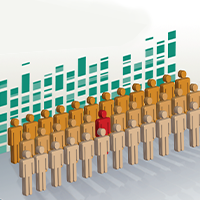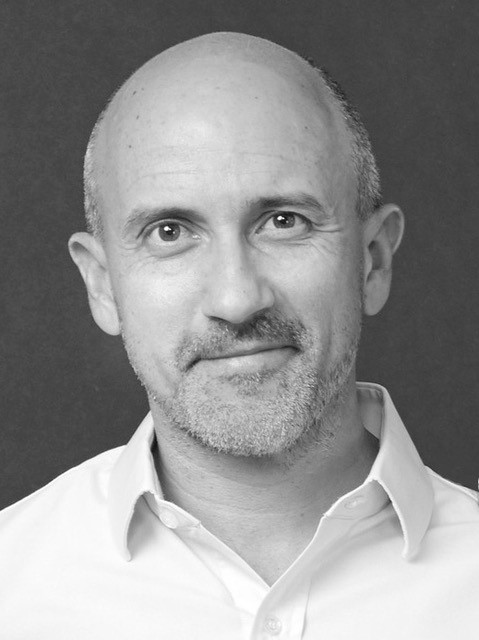SR-TIGET: Continuing to Drive Enabling Technology Development & Clinical Innovation in Rare Diseases
Cell Gene Therapy Insights 2018; 4(7), 719-724.
10.18609/cgti.2018.069
Where specifically do you see the greatest unmet medical need in the lysosomal storage diseases (LSD) field currently?
AA: Lysosomal storage diseases as a group have varying severity. The most severe forms are those that involve the nervous system and organs, as well as skeletal abnormalities.
While enzyme replacement therapy has been a breakthrough in some diseases, allogeneic transplantation has also changed the care of these patients. However, studies tell us there remains a residual disease burden – for example, in MPS 1 (mucopolysaccharidosis type I, or Hurler syndrome) and in metachromatic leukodystrophy (MLD), which is not treated by allogeneic transplantation other than in its late onset form.
Rare LSDs represent a rich target area for gene therapy developers – can you tell us more about SR-Tiget’s own ongoing research and clinical development activities in this particular field?
AA: We started in this area of research several years ago, with the first project focused on metachromatic leukodystrophy.
At that time, the whole rationale of developing a gene therapy approach for an incurable disease such as MLD was to exploit the ability to manipulate and engineer hematopoietic stem cells – to produce mature cells, which express the missing enzyme at super-physiological levels. Dr Naldini and Dr Biffi at SR-TIGET hypothesized that this would correct the defect not only in multiple tissues, but particularly in the central nervous system, thanks to the ability of the blood cells and blood cells precursors to migrate into the tissue and the CNS (especially after chemotherapy has been given to the patient) and to then produce the missing enzyme both locally, and at higher levels than one would expect after a normal donor transplantation. This enzyme would then be uptaken by the resident cells in the nervous system through a specific receptor, allowing for so-called cross-correction to take place.
This approach has the advantages of intravenous delivering to the CNS, of providing a continuous source of the enzyme locally, and of achieving higher-than-normal levels of the enzyme. Furthermore, this being a transplantation of autologous stem cells, one avoids some of the toxicity that is typically seen with allogeneic transplantation, thus removing the risk of graft versus host disease or rejection, and of the need for immunosuppression.
We are also working on MPS 1 using the same principle. The challenge there is to correct both the CNS and the bone defects, the latter being quite relevant in terms of disease burden in these patients.
Today, we have clinical trials underway in both diseases. MLD is certainly much more advanced: we have an ongoing clinical trial, sponsored by Orchard Therapeutics Ltd, the licence holder for the gene therapy product, which has completed enrolment. Additional patients have been treated under compassionate use or Hospital Exemption. There is also an open clinical trial using cryopreserved autologous hematopoietic stem cells. The most recent results with those patients, published in 2016 in The Lancet, clearly show that gene therapy has the ability to halt disease progression in MLD – especially in patients who are diagnosed quite early in life and treated when pre-symptomatic. We see a good safety profile and efficacy in terms of both motor function and cognitive ability.
The MPS 1 clinical trial has only just started so of course we don’t have data as yet, but the principle will be the same: to overexpress the missing Alpha-L-iduronidase enzyme.
What do you perceive are the critical obstacles to be addressed before cell and gene therapy can provide a potentially curative option to healthcare providers for LSD indications?
AA: It differs between in vivo and ex vivoapproaches.
In vivo approaches are currently based on either local or systemic injection. One potential issue is immune response, which is a known phenomenon that occurs after enzyme replacement therapy, but which may also result from in vivo gene therapy – that may mean it would be difficult to re-administer the treatment unless a different protein envelope is used for the virus, for example.
With ex vivo gene therapy, it’s important to ensure the stem cells produce the appropriate levels of the enzyme – or rather, progeny of the stem cells.
And in order to expand into LSDs that are less severe than those I’ve mentioned, I think we need longer follow-up to ensure the safety profile is adequate. We can then look to treat diseases that are currently not treatable by allogeneic transplantation, for example, but in which gene therapy could provide both a safer and a more efficacious approach to providing the missing enzyme.
A combination therapy approach is considered by some as a necessity to delivering improvements on current standards of care in the LSD area – what’s your view on optimal next steps in this regard?
AA: It is possible to envisage ways of rapidly delivering the enzyme – for example, via the central nervous system following local delivery of in vivo gene therapy – because ex vivo hematopoietic stem cell gene therapy requires a few months before the cells engraft and produce a sufficient amount of enzyme. So in principle, a combination therapy could provide some benefit for rapidly progressing diseases, but of course, it would be important to assess firstly whether this is feasible – to gauge whether there’s any interaction or potential interference in combining the two approaches.
Changing tack, the development and application of lentiviral vectors for gene transfer continues apace. SR-Tiget is a true pioneer of this technology – so how do you see lenti’s future unfolding?
AA: The lentiviral vector field started in clinical application almost a decade ago now. Our own clinical experience began with our first MLD patient being treated in 2010, closely followed by our first patient with Wiskott–Aldrich syndrome.
We continue to see efficacy and stability as well as a positive safety profile, with no indication of clonal expansion or adverse events relating to gene therapy – that’s very encouraging to us and of course, to many other groups around the world. In particular, it encourages us to move on and explore other disease applications – beta thalassemia, for example, where we have a clinical trial ongoing that is producing promising results.
I see that through our learnings from exploring the most severe disorders, there’s a chance of now expanding to other, less severe and more common target diseases. If the efficacy and risk–benefit balance remain favorable, then I would remain optimistic about a highly potent technology that provides the power to regenerate the entire hematopoietic system.
SR-Tiget continues to lead in the adoption and development of novel enabling technologies and platforms, as evidenced by recent activities involving gene editing – can you share your thoughts and expectations for the impact gene editing will have in the cell and gene therapy space specifically over the short and longer terms?
AA: Gene editing is clearly a revolutionary technology with fantastic potential. From the technical point of view, efficacy in terms of the ability to correct defects in hematopoietic stem cells has improved lately.
I think there are two key issues before it reaches a wider field of application, though. One is the level of correction – the threshold of demonstrating superiority to the corrective potential of lentiviral vectors in many diseases has not been reached yet, from what I’ve seen in animal model studies. While it is true to say that gene editing does offer potential advantages when compared to lentiviral vectors – in situations where you need a fully endogenous controlled regulation of transcription, for example, or to inactivate genes for a dominant mutation – for most applications, this threshold has not yet been reached.
Secondly, in terms of safety, we also need to accumulate more data about off-target effects and the impact of gene editing on hematopoietic stem cell behaviour in humans.
Clinical trials have now been started in both in vivo and ex vivo gene editing. I think the data from these trials will be crucial towards learning more about the safety and efficacy of gene editing approaches. If that balance between safety and efficacy can be achieved, then this really could be a technology for wider use in clinical application and eventually, in healthcare practice.
Finally, as you reflect on the history of Strimvelis as an approved therapeutic intervention, what lessons would you like to see the rare disease therapeutics community as a whole – academics, industry, healthcare providers/practitioners and patient advocates alike – take forward?
AA: I think that the experience of Strimvelis taught us many things, but first of foremost, that you need collaboration between academia, industry and of course, all other stakeholders.
The successful development of Strimvelis relied on scientific breakthrough, clinical experience and knowledge of the disease, but also on the fact that a large industrial organisation such as GSK decided to establish an alliance with San Raffaele Hospital and the Telethon Foundation to bring forward this programme, as well as others for rare diseases – the experience, strength and competence of industry resources were key to bringing Strimvelis to the market. Of course, GSK eventually decided to change strategy, but now another company, Orchard Therapeutics, is continuing this work. And I think the message remains that we really need alliances because we all need the varying resources and expertise that different stakeholders can provide.
The second message is to try from a very early stage to conceptualize and design a product that can get to the market, and that can then be easily produced, distributed and made available to patients at that commercial level. What drives ongoing research for academic centres in particular is scientific interest, the desire for clinical translation, and the need to provide the eventual therapy or cure to patients even after clinical trials have been completed. Especially in the rare diseases field, it is so important to establish a partnership as early as possible in order to access the necessary resources and competences to make the therapeutic accessible to patients on an ongoing basis, but also in terms of R&D: which pre-clinical studies to do, how to design clinical trials… all of these things must be considered and built in advance to get the maximum out of the resources available. Then even very small numbers of clinical trial patients (which is common for ultra-rare diseases, of course) can provide sufficient safety and efficacy data to allow registration – Strimvelis received its market authorisation on the back of data from 12 patients in clinical trials, and just 18 patients overall.
Affiliation
Alessandro Aiuti
San Raffaele Hospital, Telethon Institute for Gene Therapy, Milan, Italy
This work is licensed under a Creative Commons Attribution- NonCommercial – NoDerivatives 4.0 International License.


